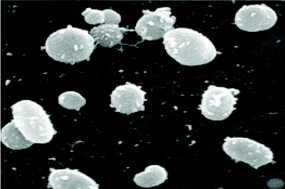Assimilatory and dissimilatory processes of microorganisms affecting metals in the environment
Abstract
Microorganisms use a variety of strategies to extract trace metals from

- This article is part of the themed collection: Metallomics
* Corresponding authors
a Department of Geosciences, The Pennsylvania State University, University Park, USA
b Earth and Environment Systems Institute, The Pennsylvania State University, University Park, USA
c School of Earth and Space Exploration, Department of Chemistry and Biochemistry, Arizona State University, Tempe, USA
Microorganisms use a variety of strategies to extract trace metals from

 Please wait while we load your content...
Something went wrong. Try again?
Please wait while we load your content...
Something went wrong. Try again?
L. J. Liermann, E. M. Hausrath, A. D. Anbar and S. L. Brantley, J. Anal. At. Spectrom., 2007, 22, 867 DOI: 10.1039/B705383E
To request permission to reproduce material from this article, please go to the Copyright Clearance Center request page.
If you are an author contributing to an RSC publication, you do not need to request permission provided correct acknowledgement is given.
If you are the author of this article, you do not need to request permission to reproduce figures and diagrams provided correct acknowledgement is given. If you want to reproduce the whole article in a third-party publication (excluding your thesis/dissertation for which permission is not required) please go to the Copyright Clearance Center request page.
Read more about how to correctly acknowledge RSC content.
 Fetching data from CrossRef.
Fetching data from CrossRef.
This may take some time to load.
Loading related content
